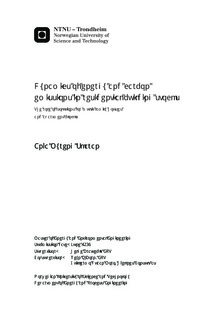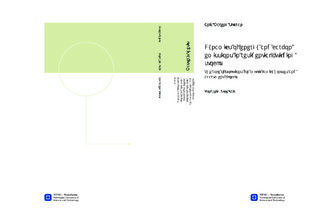| dc.description.abstract | A decrease in energy consumption is an important part of the effort to reduce fossil emissions. Buildings contribute to a considerable share of the energy consumption in Norway, mainly because of the cold climate and low energy prices. Building regulations today set low limits for maximum energy use for heating, but existing buildings have a higher potential for reductions, as the maximum energy limit has changed over the years. This report covers possible strategies for reducing energy demand in a specific part of the Norwegian building stock: Apartment blocks constructed between 1981 and 2010. Earlier projects have also evaluated the energy reduction potentials in the Norwegian dwelling stock. However, this has mostly been done on an aggregated level, and as buildings vary greatly in size, location, and age, the same recommendations cannot be expected to apply to all buildings. The effects of rehabilitations and demolitions on the building stock are often simplified to linear behaviour, but this is not accurate.Calculations were carried out on defined standardised buildings in a climatic zone represented by Oslo. First, an energy balance was established for evaluating the energy consumption of the various buildings, both in their original state, and subject to various combinations of rehabilitations to heating system, insulation, and ventilation. Then, heating-related costs were calculated in order to find the options with the lowest net present value, based on an investment horizon of 36 years. Based on these results, possible scenarios for energy use and CO_2 emissions were calculated for the years 2014-2050, based on the average building being rehabilitated after 40 years.In line with other studies, the energy consumption in the original buildings were found to be low, and close to the current TEK 10 regulation, which must be followed if major rehabilitations are conducted. Hardly any rehabilitations were found to be profitable with the costs of today, and a doubling of the electricity costs affected the outcome to a small degree only. In most cases, the best option is to change as little as possible, although replacements of windows and doors were profitable for the oldest buildings. Using electric radiators for all room heating is the most common heating system today, but this is not in line with the TEK 10 standard. If the heating system is to be changed, air-air heat pumps are the best alternative. However, the savings from these depend highly on climate conditions. Fuel oil heaters are the least profitable option, and these should be removed, as is mandatory soon anyway.Demolitions alone result in a 15 % energy reduction within 2050, close to the scenario based on lowest possible costs at 21 %. The low emissions case results in a 50 % reduction, while rehabilitations to zero energy buildings would reduce the energy by 72 %. No official reduction target is presently set for Norway, although a 50 % energy reduction between 2010 and 2040 has been expressed in a report for the former Government. This target is only possible to reach with zero energy upgrades. Emissions follow similar paths as the energy when Norwegian electricity mix is used as a basis. However, definitions on electricity mix and related emissions affect the results more than the chosen energy rehabilitations when estimating total emissions. | nb_NO |

